Graphics Reference
In-Depth Information
Frames could also be used to solve problems like the one in Example 3.4.3.1. See
Section 3.5.1.
There is another interesting aspect to the projectivity U
a
. Consider the lines
1
1
mx
+=-
y
and
mx
-=
y
a
a
through (0,-1/a) and with slope m. Note that
(
)
(
)
xyz M
,,
=
xyay z
,,
+
.
a
In particular,
1
1
Ê
Ë
ˆ
¯
Ê
Ë
ˆ
¯
0
,
-
,
1
M
=-
0
,
,
0
,
a
a
a
1
1
1
1
1
1
Ê
Ë
ˆ
¯
Ê
Ë
ˆ
¯
Ê
Ë
ˆ
¯
x
,
--
mx
,
1
M
=-- -
x
,
mx
,
amx
=-
-
,
+
,
1
,
and
a
a
a
amx
am a
2
amx
1
1
1
1
1
1
Ê
Ë
ˆ
¯
Ê
Ë
ˆ
¯
Ê
Ë
ˆ
¯
x
,
-+
mx
,
1
M
=-+
x
,
mx amx
,
=
,
-
,
1
.
a
a
a
amx
am a
2
amx
This shows that the center (0,-1/a) of the central projection has been mapped to “infin-
ity” and the two lines have been mapped to the lines
1
1
x
¢=-
and
x
¢=
,
am
am
respectively. See Figure 3.13. In general, lines through (0,-1/a) are mapped to verti-
cal lines through their intersection with the x-axis. Furthermore, the central projec-
tion from (0,-1/a) has been transformed into an orthogonal projection of
R
2
onto the
x-axis. Dually, the vertical lines x = c are mapped to lines through (c,0), which inter-
y
y¢
x¢= -1/ma
x¢= 1/ma
mx - y = 1/a
mx + y = -1/a
x
x¢
-1/ma
1/ma
eye
-1/a
Figure 3.13.
The geometry
of a central
projection.
eye at -•
(a)
(b)

